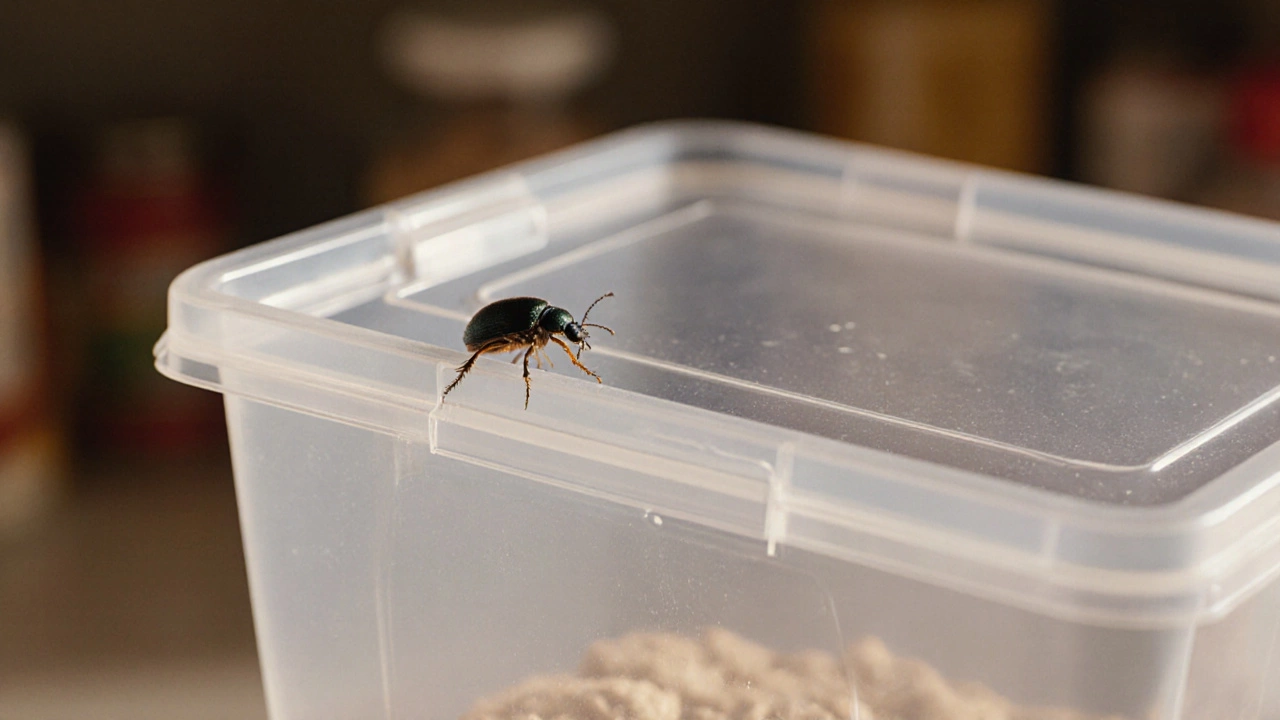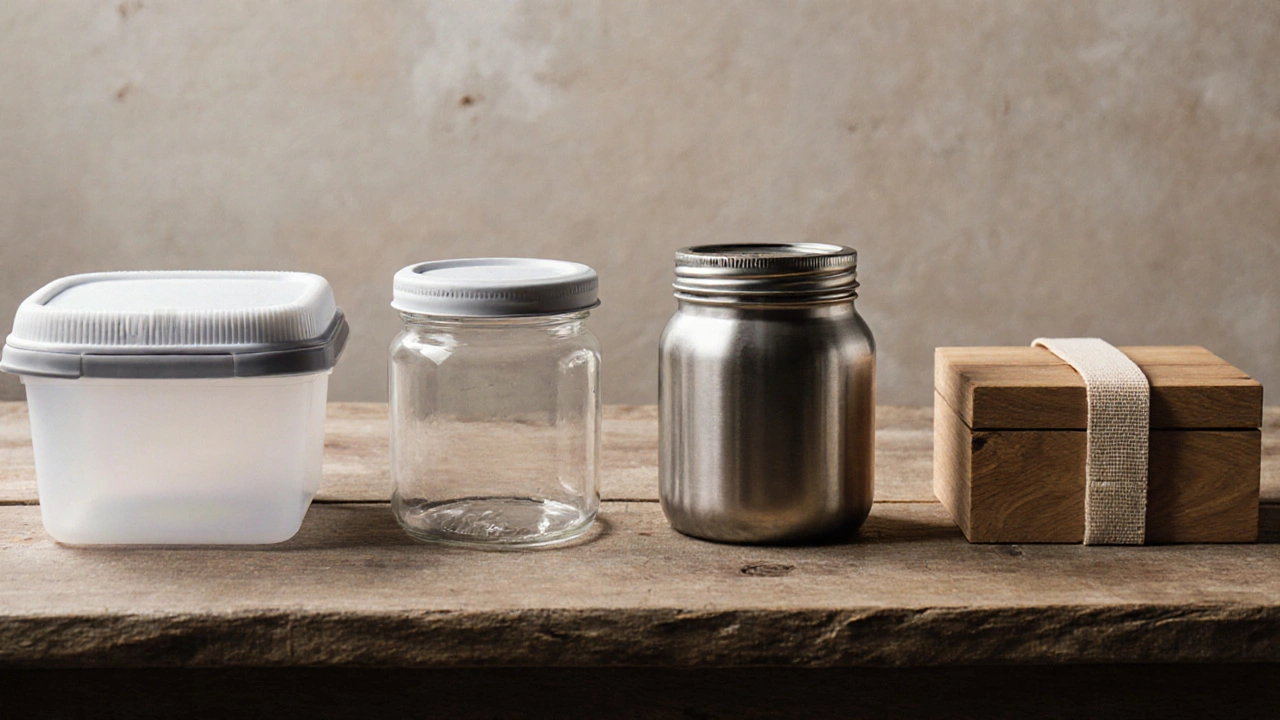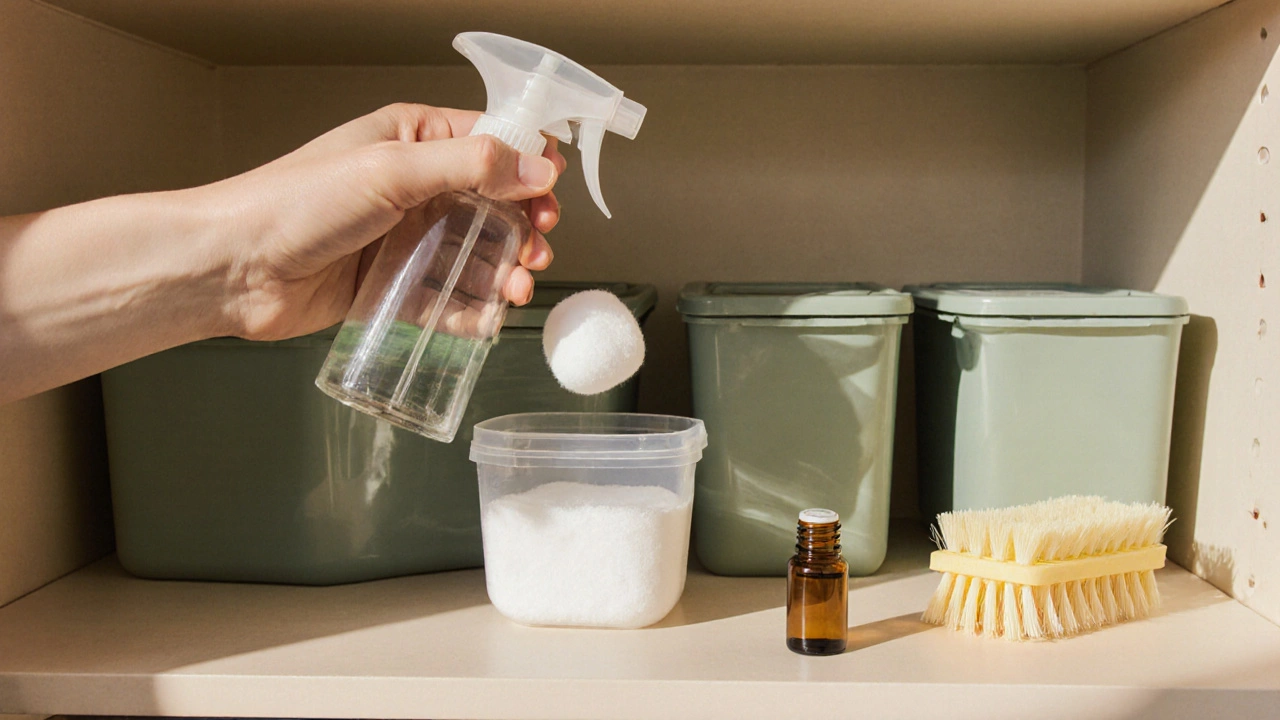 12
Oct,2025
12
Oct,2025
Bug Resistance Calculator
Container Risk Assessment
Finding a tiny beetle or a moth crawling out of a box you just opened is enough to ruin anyone’s day. It raises an obvious question: can bugs really get into the containers we trust to keep our belongings safe? The short answer is yes-if the container’s design, seal, or the way we use it creates an invitation. The longer answer breaks down exactly how bugs sneak in, which containers stand up best, and what you can do today to seal the deal.
How Bugs Slip Inside
Even the most sturdy storage containers are not immune to insects if they present two basic conditions: entry points and attractive environments.
Insects like pantry moths, beetles, and ants are tiny enough to slip through microscopic gaps. A cracked lid, a warped lid‑rim, or a missing gasket creates a portal. Once the container is opened, the sudden rush of warm air can pull in flying insects, especially if they’re already hovering nearby.
Beyond physical gaps, bugs are drawn to food residues, moisture, and darkness. A container that houses stale grains or a damp blanket provides a perfect breeding ground. The combination of a tiny opening and a snack inside is a recipe for infestation.
Container Types and Their Bug‑Resistance
The material and sealing mechanism matter more than you might think. Below is a quick side‑by‑side look at the most common household options.
| Material | Seal Type | Breathability | Bug Resistance |
|---|---|---|---|
| Plastic (high‑density polyethylene) | Snap‑fit lid with silicone gasket | Low | High - tight gasket blocks most insects |
| Plastic (low‑cost thin material) | Press‑on lid, no gasket | Low | Medium - gaps around the rim allow entry |
| Metal (stainless steel) | Threaded screw‑on lid with rubber seal | None | Very High - metal is non‑porous and seal is robust |
| Wood (laminated) | Clamshell with cloth strap | Medium - wood breathes | Low - wood can warp, creating cracks |
Notice how the presence of a silicone gasket or a rubber seal makes a huge difference. Even a premium‑looking container can fail if the seal degrades over time.

Practical Steps to Keep Bugs Out
- Inspect lids before buying - look for signs of wear, cracks, or missing gaskets.
- Choose containers with an airtight seal rated for food storage.
- Clean containers thoroughly after each use - a quick wash removes crumbs that attract pantry moths and beetles.
- Store containers in a cool, dry place; high humidity encourages moisture buildup, which many insects love.
- Rotate stock regularly - older food is more likely to harbor hidden larvae.
When Bugs Have Already Invaded
If you discover a bug inside a container, act fast. The longer you wait, the more likely the insects will spread to nearby items.
- Empty the container and discard any compromised contents.
- Wash the container with hot, soapy water. For tough residues, soak in a solution of one part vinegar to three parts water.
- Rinse and dry completely - moisture left behind can re‑attract pests.
- Apply a food‑safe pest control spray (e.g., pyrethrin‑based) to the interior and rim. Follow label directions.
- Place the sealed container back in storage, preferably on a shelf away from other food items for a few days to monitor for re‑infestation.
For severe infestations, especially with fast‑breeding insects like ants, you may need to treat the surrounding area with a perimeter spray or set up bait stations.

Replace or Repair? Making the Call
Not every container that shows a sign of wear needs to be tossed. Here’s a quick decision guide:
- Cracked lid or missing gasket - replace the gasket if you can purchase one; otherwise, swap the container.
- Warped plastic - these often develop gaps after exposure to heat; replace them.
- Rusty metal - corrosion can compromise the seal; replace or refinish.
- Wood that splinters - consider a new container; wood is hard to keep airtight long‑term.
In most cases, a modest investment in a high‑quality, sealed container saves you from bigger losses caused by spoiled food or damaged belongings.
Key Takeaways
storage containers can become bug‑friendly if they have compromised seals, are stored in humid conditions, or house food residues. Choosing airtight, gasket‑sealed containers-especially those made of sturdy plastic or stainless steel-greatly reduces risk. Regular cleaning, dry storage, and prompt action when infestations appear keep your home pest‑free.
Frequently Asked Questions
Can I use regular plastic bags instead of containers to keep bugs out?
Plastic bags lack a reliable seal and can easily tear, allowing insects to enter. If you must use a bag, choose a zip‑lock style and double‑seal it, but a rigid container with a gasket is always more secure.
Do metal containers attract any specific pests?
Metal itself isn’t attractive to insects, but if the lid threads corrode, gaps appear. Keep metal containers dry and inspect the threads regularly to prevent rust‑induced entry points.
What natural repellents work inside containers?
A few drops of essential oils like peppermint, lemon, or tea tree on a cotton ball placed in a separate compartment can deter ants and pantry moths. Make sure the oil doesn’t contact food directly.
How often should I replace the gaskets on my containers?
Inspect gaskets every six months. If they show cracks, become hard, or no longer compress fully, replace them. Most manufacturers sell replacement silicone rings for a few dollars.
Is it safe to use chemical sprays inside containers that store food?
Only use sprays labeled as “food‑contact safe” and follow the waiting period on the label. Rinse thoroughly after the recommended time before refilling with food.




